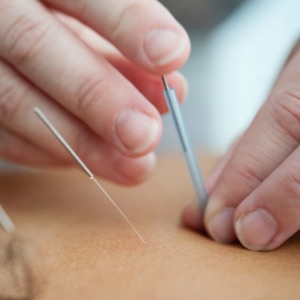Headache 101

By Tory Wegner, LAc
Fall is finally in the air! Unfortunately for some, with the season change comes barometric changes and allergy issues, which can cause some nasty headaches. Over the past few weeks I’ve seen a big influx of old and new patients complaining about headaches. I’m always glad when they come in, because even if that’s not the main reason they are in for treatment, I know that I can help with the headache. I have lots of clinical experience treating headaches and it’s something I see on a daily basis.
One of the many strengths of Traditional Chinese Medicine (TCM) is what we call pattern differentiation. This means that I could have 5 people who all have the same western diagnosis of ‘migraine’ for instance, all of whom are taking the same prescription drug Imitrex. With pattern differentiation in TCM, all of these patients could have 5 different diagnoses, which would mean each patient would get a unique treatment, treatment plan, set of points, and herbs. This is really what we mean when we say treatment is “tailored” to each patient; no two headache patients will ever receive the same treatment because they are different people, presenting with different ‘patterns.’ Because of this, I am able to help people manage their headaches because I am focusing on the imbalance in their body that is causing them to have a headache in the first place. With TCM I am never limited by the single diagnosis of “migraine.”
A few of the main things I’m interested in when talking to someone with a headache is where it’s located, what it feels like (sharp, stabbing, throbbing, achy, etc.), what it’s triggered by, what makes it better or worse, when it occurs, and whether it is chronic or acute. These types of questions, along with looking at a person's tongue and feeling their pulse, help me to make my TCM differential diagnosis and develop a treatment that will alleviate the headaches. I also help people investigate what potential triggers could be, say whether it’s diet related or environmental, to help empower people to make lifestyle changes to reduce the frequency and severity of headaches.
Here are two examples to elucidate what I mean by pattern differentiation. The first patient presents in the clinic with a headache they describe as throbbing or pounding that is very intense, with pain behind their right eye that extends to the temple and side of the head, and which worsens “when they wind down” or on the weekends. They report having occasional dizziness or ringing in the ears, and their blood pressure has been on the high side lately. This patient works long hours and is very stressed out and is a self-purported type A person. They have insomnia and tend to be irritable and easily angered. Even though their western diagnosis is “migraine,” that word doesn’t exist in TCM, so my diagnosis for them is called a Liver Yang rising headache. This is considered an excess pattern and the points I would select would be along the affected channels and the focus would be draining the energy/qi out of the head as well as helping the person relax and find outlets for their stress and emotions. Things I might advise them to do would be exercise, meditate, and avoid alcohol and caffeine.
The second patient presents in the clinic with a dull, “heavy” feeling head that affects the forehead and sometimes the whole head. They say it’s worse in the morning, and the headache tends to linger, something they deal with most days. They have a hard time concentrating and getting going, struggle with chronic sinus congestion, have some nausea on and off, their appetite is low, and they are carrying a few extra pounds. They also crave sweets and tend to worry a lot. The patient reports that even though the headache is usually chronic and not too severe, sometimes it can get really intense, especially with barometric changes, after a glass of wine, or overindulging. They take allergy medicine or a decongestant regularly and Imitrex when the headache gets severe. Again, this patient may receive a western diagnosis of “migraine” but as you can see, this type of headache is clearly different from the first (and it’s a very common type of headache that I’m seeing right now with the season change). In TCM, this pattern is called Spleen Qi Deficiency with damp accumulation in the head. This is considered a mixed excess and deficient pattern because the spleen is weak and unable to transform the dampness and the excess damp is lodging in the head. The points utilized in this case are totally different from the first and would focus on points that tonify the Spleen as well as transform dampness. Dietary changes are critical for this type of patient and I would advise them to reduce or eliminate sugar, dairy, alcohol, greasy and spicy food because all of these further contribute to the damp, which makes it even harder to clear…hence it’s such a lingering and persistent problem for such a patient. Typically I would also suggest a probiotic and a suitable herbal formula.
Headaches are such a common complaint that some people don’t even realize it’s their bodies’ way of letting them know there is an imbalance. Treating headaches gets me excited all over again about being a TCM practitioner because I like the challenge of pattern differentiation and love it when people get good results.


